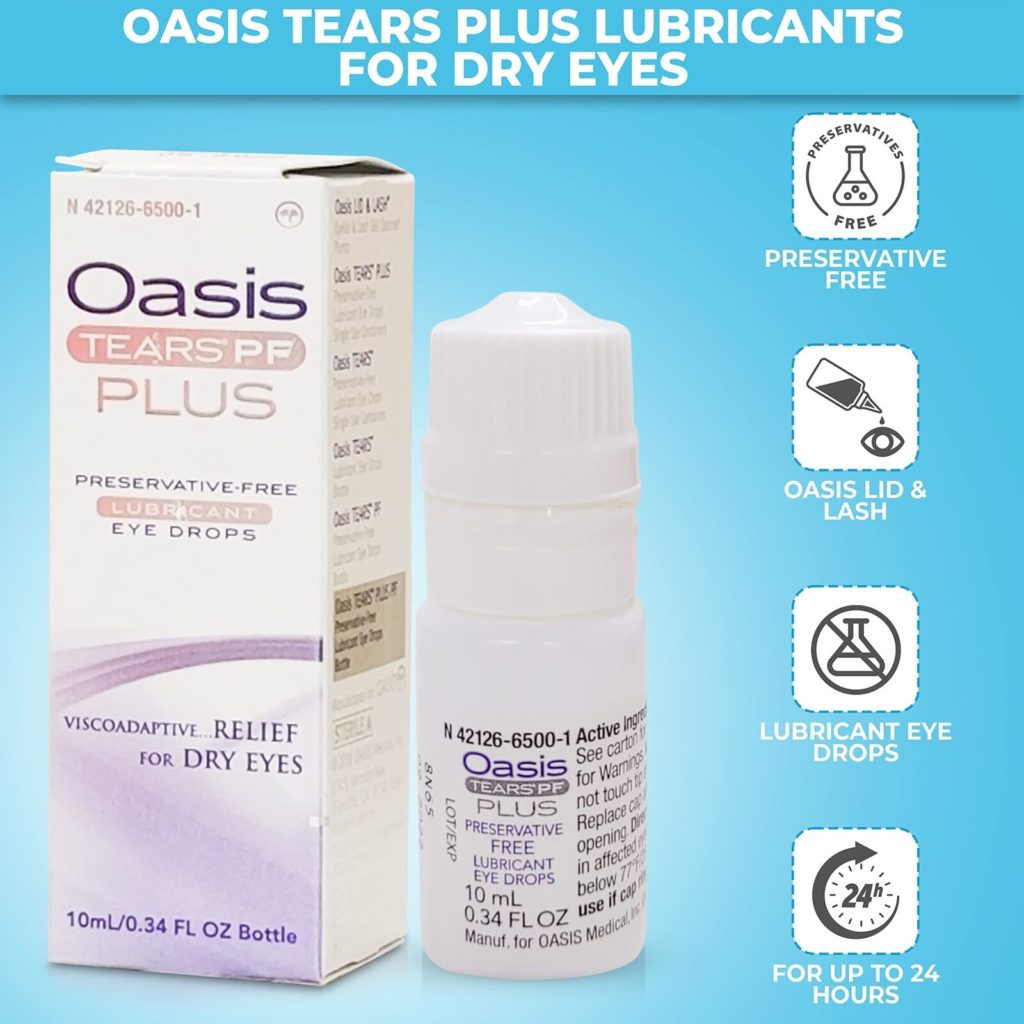Do I have Dry Eyes or Allergies?
In the realm of ocular discomfort, distinguishing between dry eyes and allergies can be a perplexing challenge. Can allergies cause dry eyes and blurry vision? Can Dry Eyes be caused by allergies? We’ll try to tackle these questions and more here. The symptoms may overlap, leaving individuals wondering whether they are grappling with dry eyes, allergies, or perhaps a combination of both. In this comprehensive guide, we’ll delve into the causes, differences in symptoms, and effective treatment plans for both dry eyes and allergies, helping you unravel the mystery and find relief.
Understanding Dry Eyes
Causes of Dry Eyes
Dry eyes, or keratoconjunctivitis sicca, occur when the eyes lack sufficient lubrication due to inadequate tear production or poor tear quality. Various factors can contribute to this condition:
1. **Age:** As individuals age, tear production tends to diminish, making older adults more susceptible to dry eyes.
2. **Environmental Factors:** Prolonged exposure to dry or windy climates, air conditioning, or heating systems can contribute to evaporative tear loss.
3. **Screen Time:** Extensive use of digital devices can reduce blink frequency, leading to insufficient tear distribution across the eye’s surface.
4. **Medical Conditions:** Conditions such as diabetes, rheumatoid arthritis, and thyroid disorders can impact tear production.
5. **Medications:** Certain medications, including antihistamines, decongestants, and antidepressants, may contribute to dry eyes as a side effect.
Symptoms of Dry Eyes
Recognizing the symptoms of dry eyes is crucial for accurate diagnosis and effective management. Common symptoms include:
– **Persistent Dryness:** A persistent sensation of dryness, grittiness, or a feeling of a foreign body in the eye.
– **Redness:** Redness of the eyes may occur due to irritation caused by insufficient lubrication.
– **Blurred Vision:** Blurred vision, particularly during activities that require prolonged focus, can result from inadequate tear film.
– **Sensitivity to Light:** Increased sensitivity to light, or photophobia, may be a symptom of dry eyes.
Understanding Allergies
Causes of Eye Allergies
Eye allergies, also known as allergic conjunctivitis, stem from the immune system’s response to allergens like pollen, pet dander, dust mites, or mold spores. When the eyes come into contact with these allergens, the body releases histamines, triggering various allergic reactions.
1. **Seasonal Allergies:** Pollen from trees, grasses, and weeds can induce seasonal allergic conjunctivitis.
2. **Perennial Allergies:** Allergies to year-round triggers such as pet dander, dust mites, or mold can lead to perennial allergic conjunctivitis.
3. **Environmental Irritants:** Exposure to smoke, pollution, or strong odors can exacerbate eye allergies.
4. **Contact Lens Allergies:** Some individuals may experience allergic reactions related to contact lens wear, either due to lens materials or solutions.
Symptoms of Eye Allergies
Eye allergy symptoms can be similar to those of dry eyes, but certain indicators are more specific to allergic conjunctivitis:
– **Itching:** Itchy eyes are a hallmark symptom of eye allergies, setting them apart from dry eyes.
– **Watery Eyes:** Excessive tearing is a common response to the irritation caused by allergens.
– **Swelling:** Allergic reactions can lead to puffiness or swelling around the eyes.
– **Stringy Discharge:** A stringy or mucus-like discharge may occur, particularly upon waking.
Distinguishing Between Dry Eyes and Allergies
Given the overlap in symptoms, distinguishing between dry eyes and allergies can be challenging. However, a few key differences can aid in accurate identification:
1. **Itching:** While dry eyes may cause some discomfort, itching is a telltale sign of allergies.
2. **Discharge:** Stringy or mucus-like discharge is more commonly associated with eye allergies.
3. **Seasonal Patterns:** Symptoms that coincide with specific seasons may indicate eye allergies, especially if triggered by pollen.
4. **Environmental Triggers:** Consider whether your symptoms worsen in specific environments or situations. Dry eyes may worsen with prolonged screen time, while allergies may flare up outdoors or around specific allergens.
Treatment Approaches: Dry Eyes vs. Allergies
Dry Eyes Treatment
1. **Artificial Tears:** Lubricating eye drops, or artificial tears, can provide relief by supplementing the natural tear film.
2. **Prescription Medications:** In cases of chronic dry eyes, your eye care professional may prescribe medications such as cyclosporine or lifitegrast to boost tear production.
3. **Lifestyle Modifications:** Adjustments like using a humidifier, taking breaks during extended screen time, and staying hydrated can help alleviate dry eye symptoms.
4. **Warm Compresses:** Applying warm compresses to the eyes can help improve oil gland function and enhance tear quality.
5. Diet: Taking a proper form of Omega 3s is very important.
Eye Allergies Treatment
1. **Antihistamine Eye Drops:** Over-the-counter or prescription antihistamine and mast cell stabilizers eye drops can effectively alleviate itching and other allergic symptoms.
2. **Decongestant Eye Drops:** Decongestant eye drops can reduce redness and swelling associated with eye allergies.
3. **Avoidance of Triggers:** Identifying and avoiding allergens that trigger symptoms is a key aspect of managing eye allergies.
4. **Cold Compresses:** Applying cold compresses can help soothe swollen or irritated eyes.
When to Seek Professional Guidance
If you find it challenging to pinpoint whether you’re dealing with dry eyes or allergies or if your symptoms persist despite over-the-counter remedies, it’s crucial to consult with an eye care professional. They can conduct a comprehensive eye exam, inquire about your medical history, and perform tests to accurately diagnose the underlying cause of your eye discomfort.
Conclusion: Finding Clarity in Ocular Comfort
Navigating the landscape of ocular discomfort requires a nuanced understanding of the differences between dry eyes and allergies. By recognizing the distinct causes, symptoms, and treatment plans for each condition, individuals can take proactive steps toward finding relief and optimizing their eye health. Whether you’re combatting the persistent dryness of keratoconjunctivitis sicca or grappling with the itching and watering associated with allergic conjunctivitis, a tailored approach guided by professional advice can bring clarity to your ocular comfort journey. Remember, when in doubt, seeking the guidance of an eye care professional is the key to ensuring your eyes receive the care they deserve.



